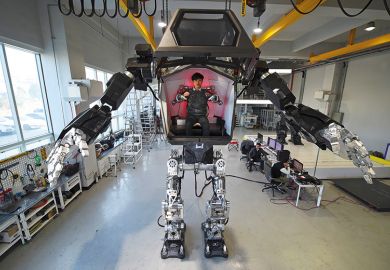For its latest research funding programme, the Faraday Challenge, the UK government has taken an innovative approach: offering support for battery technologies from the genesis of new ideas right through to product development, scale-up and manufacture.
But science policy experts have concerns about the effectiveness of the programme, which delivers a series of coordinated competitions for funding to boost the UK’s expertise in battery technology.
And these concerns have wider significance, with academics believing that the initiative could be an indicator of the type of funding policies to come from the creation of UK Research and Innovation, which will bring together the organisations that fund fundamental and applied research for the first time.
The Faraday Challenge, which has a budget of £246 million, was announced by Greg Clark, the business secretary, on 24 July. The challenge is split into three streams that cover the research, innovation and scale-up related to new battery technologies, which together are designed to produce a step change in the commercialisation of research and drive economic success for the UK in this area.
The first research phase of the challenge includes a £45 million competition, led by the Engineering and Physical Sciences Research Council, to create a virtual “Battery Institute”. The funding is designed to bring together the “best minds and facilities” in universities, according to the Department for Business, Energy and Industrial Strategy.
Kieron Flanagan, senior lecturer in science and technology policy at the Alliance Manchester Business School, said that although using language such as “challenge” in the policy was new, it covered an old idea – problem-solving or applied research.
“It represents the re-legitimisation of spending money on applied research,” says Dr Flanagan.
This type of research funding fell out of favour during the late 1970s and 1980s as Margaret Thatcher, who was then prime minister, favoured basic or blue-skies research that has no immediate application.
Her government believed that using taxpayers’ money to fund applied research was in effect a subsidy for industry, and for most part, Whitehall pulled out of funding this type of research with the hope that companies would fill the void. But, in reality, private investment stalled.
“The UK hasn’t chosen to invest in it for 30 years, which may explain why it has fallen behind with technology. It is missing capacity,” said Dr Flanagan.
In recent years, there has been a renewed interest in applied research, he added. The current government launched a Green Paper outlining its industrial strategy in January, which included a fund to support academic and industrial research that solves specific problems, modelled on the Defense Advanced Research Projects Agency in the US.
Dr Flanagan said that there is “very little systematic evidence” about the effectiveness of any research funding policies, including this one. “All this talk is not very informed in reality,” he added.
But the person who helped develop the idea said that the policy was designed to tackle the big issues in science that are not adequately addressed by existing “piecemeal” funding schemes.
Dick Elsy, chief executive of the High Value Manufacturing Catapult and chair of the Automotive Council's manufacturing group, helped to develop the proposal that became the Faraday Challenge with colleagues from the Warwick Manufacturing Group and leading academics.
He admitted that it is a new approach to research funding in the UK. “From what I’ve seen so far, it has really fired up industry and the innovation community. It has also brought the academic community together with the innovation community in a really ‘outcome-driven’ approach,” he said.
“This is exactly what was envisioned from UK Research and Innovation – making more of our science stick in the UK and adding value for industry and the economy,” he added.
Paul Nightingale, deputy director of the Science Policy Research Unit at the University of Sussex, said that, outside some Asian countries, including South Korea, it was “rare to see this sort of very applied political policy”.
“It has been applied before [in the UK] to various nuclear technologies and the history of this has been sufficient to set some alarm bells ringing,” he added.
He said that creating a new technological industry pushed through by research was “difficult and very expensive to do”.
“The science-push model is rarely the most effective way of doing it and there is a danger of ending up with it becoming a white elephant with the operational expenditure too much and draining resources from elsewhere,” he added.
He said that the programme was likely to be beneficial, but probably in an area that politicians have not planned for.
Register to continue
Why register?
- Registration is free and only takes a moment
- Once registered, you can read 3 articles a month
- Sign up for our newsletter
Subscribe
Or subscribe for unlimited access to:
- Unlimited access to news, views, insights & reviews
- Digital editions
- Digital access to THE’s university and college rankings analysis
Already registered or a current subscriber?








